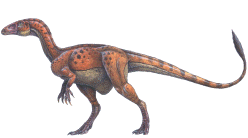 |
Compsognathidae - First
appeared: 155 MYA
The Compsognathidae is a group of small, lightly-built coelurosaurs
with relatively long legs and arms with three-fingered hands. The
genera contains only two members. Compsognathus was
for many years the smallest known dinosaur. |
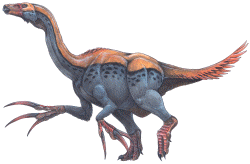 |
Therizinosauroidea -
First appeared: 125 MYA
Therizinosaurs are the strangest dinosaurs ever discovered. These
are incredibly weird animals that baffled paleontologists for many
years. They are characterized by massive claws. Over
millions of years they evolved from fast carnivores into
relatively laid-back herbivores. |
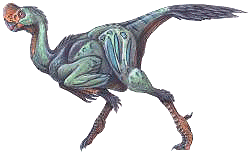 |
Oviraptoridae - First
appeared: 140 MYA
The toothless dinosaurs are
distinguished by a massive beak and the highly specific in
configuration and structure of the lower jaw with the
characteristic articular joint.
The name means "egg robber," because that is what they were first
thought to be. It is known that they protected their eggs. |
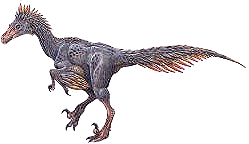 |
Dromaeosauridae - First
appeared: 125 MYA
The dromaeosaurs were
the most birdlike of all dinosaurs. Of special interest is
their forelimbs, which permitted highly flexible seizing, great
for grabbing prey. It was this ability which may have made
possible the "flight stroke." |
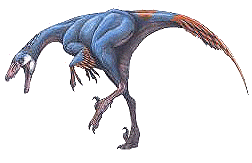 |
Troodontidae - First
appeared: 110 MYA
The troodontids are best characterized as small, rather
delicate theropods with relatively the largest brains of any
classic dinosaur, long and slender legs, and unusual teeth.
The fossil record is very sparse, so little is known of these
interesting animals. |
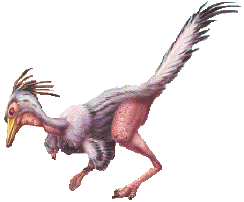 |
Alvarezsauridae -
First Appeared 95 MYA
These animals have characteristics both both birds and dinosaurs.
They are characterized a large single claw finger on the
forelimbs. All other theropods have three. They were first
classified as dinosaurs, then as flightless birds. Current
thinking is that are dinosaurs.
|
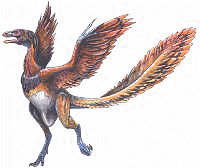 |
Aves
(birds) - First appeared: 150 MYA
Birds are bipedal, warm-blooded, egg-laying vertebrates
traditionally characterized by the presence of feathers.
Their forelimbs are wings. They have hollow bones.
Surprisingly, the first bird lived many millions of years before many of
the feathered dinosaurs. This it it did not evolve from
them, but rather evolved simultaneously with them. |
| |
|
| |
|
| |
|